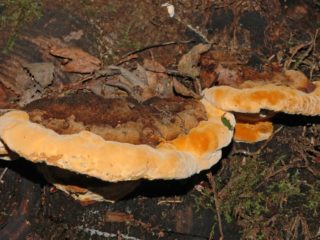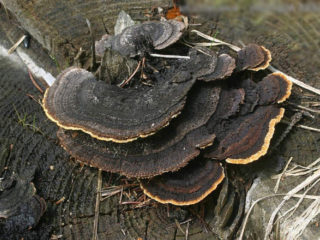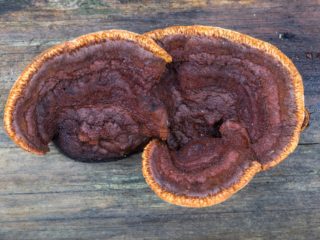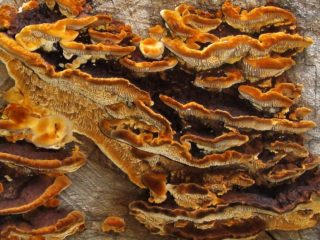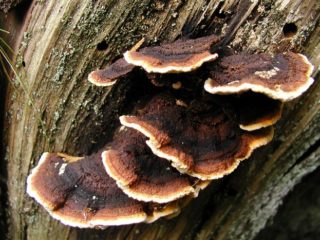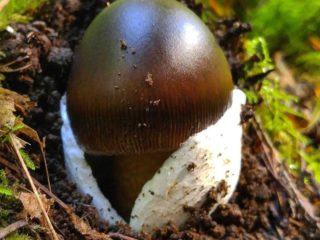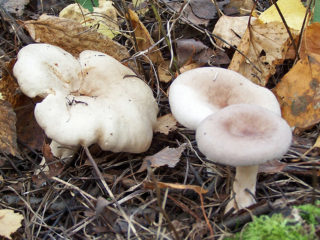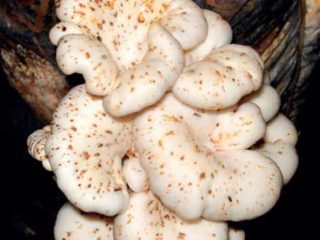Content
Gleophyllum logum is an inedible fungus that attacks wood. It belongs to the class Agaricomycetes and the family Gleophyllaceae. The parasite is most often found on coniferous and deciduous trees. Its features include growth throughout the year. The Latin name of the mushroom is Gloeophyllum trabeum.
What does log gleophyllum look like?
Gleophyllum logum is distinguished by a narrow oblong cap, reaching 10 cm in size. Adult specimens have a rough surface covered with bristles. The cap of young mushrooms is pubescent. The hymenophore is mixed, and the pores are quite small, with thin walls.
Color varies from brown to grayish.The pulp has a leathery structure and a reddish tint; the spores are cylindrical in shape.
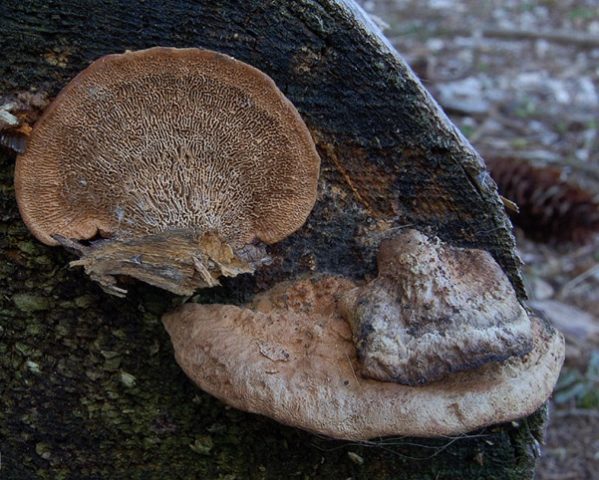
Most often, the fruits grow in groups, but sometimes they are found in a single copy.
Where and how does it grow
Log gleophyllum grows almost everywhere except Antarctica. It is found not only in wildlife, but also on the surface of wooden houses. At the site of accumulation of fruiting bodies, brown rot forms, which subsequently leads to the destruction of the tree. In Russia, they most often live in deciduous forests. The species began to be called the log species precisely because of its distribution areas. In France, the Netherlands, Latvia and Great Britain it is listed in the Red Book.
Is the mushroom edible or not?
Log gleophyllum belongs to the category of inedible mushrooms. The smell is not pronounced.
Doubles and their differences
In appearance, log gleophyllum is often confused with its counterparts. But experienced mushroom pickers will be able to easily distinguish one species from another. After all, each of them has characteristic features.
Gleophyllum fragrant
The double's hat can reach a diameter of 16 cm. It has a cushion- or hoof-shaped shape. The surface of the hat is covered with growths. The degree of roughness is determined by the age of the fruiting body. The color can be ocher or cream. The texture of the pulp is corky. The double received its name due to its characteristic anise aroma. It intensifies when the pulp is broken. The odorous gleophyllum is classified as an inedible mushroom.
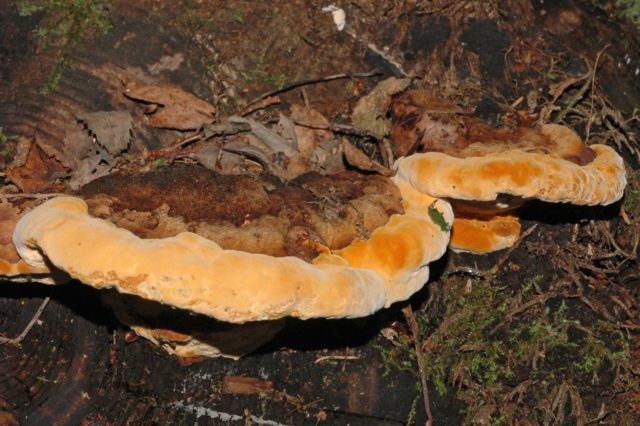
Specimens living in the tropics settle on rough wood
Gleophyllum oblongata
Oblong gleophyllum most often inhabits stumps and dead wood, but is sometimes found on deciduous trees. He loves well-lit places, so he can be found in clearings, fires and not far from human habitation. The double's cap has a triangular shape, reaching 12 cm in diameter. The fruit body has a leathery, elastic structure.
In adult specimens, cracks may be present on the surface of the hat. Color varies from yellow to dirty gray. In some cases there is a metallic sheen. A distinctive feature is the wavy edges, which may be slightly darker in color than the cap. A representative of this species is inedible, which is why it is strictly prohibited for consumption.
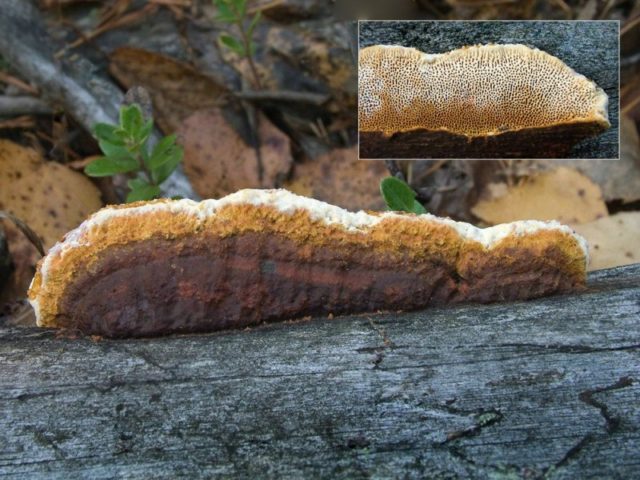
The double can hit barkless tree trunks
Daedaliopsis lumpy
Daedaliopsis lumpy (Tinder fungus lumpy) differs from its log predecessor in the variety of hymenophore and the appearance of the hat. Its diameter can reach 20 cm. A distinctive feature is a dry and lumpy surface covered with wrinkles. They divide the mushroom into color zones. The brim of the hat has a gray tint. The pores resemble a labyrinth in their pattern. Belongs to the group of inedible species.
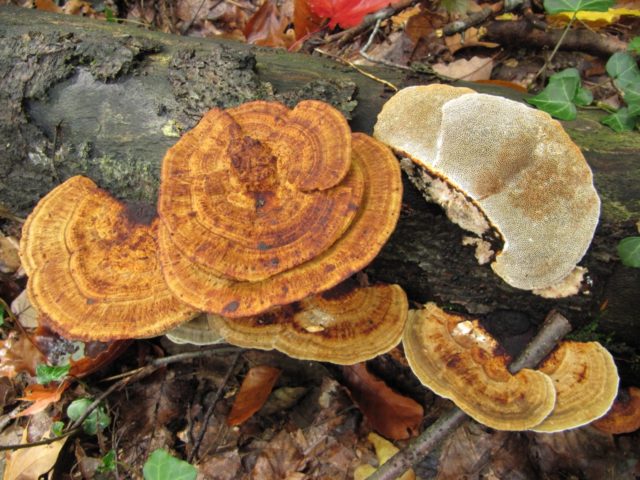
Daedaliopsis tuberous is in demand in pharmacology
Conclusion
Gleophyllum logum is capable of growing for 2-3 years. It covers diseased trees, contributing to their complete destruction. As they grow older, the appearance of the fruiting body may change.
